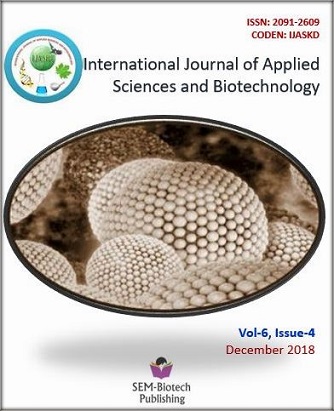Supply Chain Analysis of Rice Sub-Sector in Dang District, Nepal
DOI:
https://doi.org/10.3126/ijasbt.v6i4.22109Abstract
Nepalese economy is dependent on a slow performing agriculture sector with the majority of the population relying on subsistence farming. A study was conducted to access the supply chain, present marketing situation of rice subsector in Dang district during May-September 2017. For this study, rice traders were grouped into 5 categories Producers, seed suppliers, millers & traders, Wholesalers, and retailers. For the study, 105 respondents were selected which includes 75 rice producers, 5 seed suppliers, 5 millers & traders, 5 wholesalers and 15 retailers. A semi-structured questionnaire was used to collect data. Statistical Package of Social Sciences (SPSS) and Excel were used for data entry and analysis. The findings of the study revealed that about 94.70% of paddy farmers used improved seeds and only 5.30% farmers used hybrid seeds belongs to grain producers for only home consumption. Cooperatives were the major source of seed supplier for 90.90% of seed producers and 45.45% of marketed surplus grain producers and 57.14% of grain producers for only home consumption retained their own seeds for cultivation. The average benefit-cost (B: C) ratio of the paddy farmers was found to be 1.14:1 in the study area. Majority of the paddy selling farmers 87.88% sold their produce from the house and remaining 12.12% sold in the market. The market margin was higher in seeds supply chain NRs 27 per Kg and least was in grains supply chain NRs 25 per Kg. Similarly, producer share was higher in seeds supply chain (50.90%) and least was in grains supply chain, 44.44 percent.
Int. J. Appl. Sci. Biotechnol. Vol 6(4): 319-326




